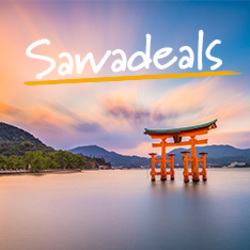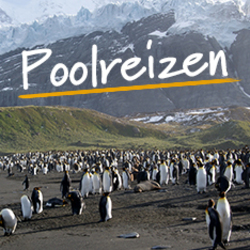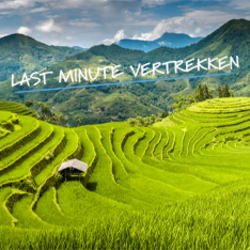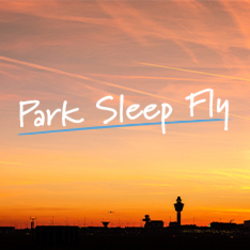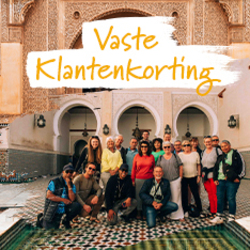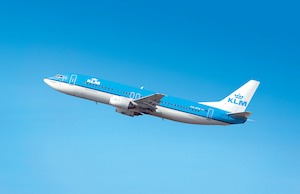Sawadee de nummer 1 in Groepsreizen en Avontuurlijke Reizen
Activities
- Wildlife Holidays
- Marine Wildlife
- Birdwatching
- Wildlife Bestsellers
- — Explore the lesser-visited wildlife hotspots on Costa Rica’s Caribbean and Pacific coastlines — Spend three nights in the remote coastal wilderness of Drake Bay, accessible by boat — Jump into the Pacific waters near Caño Island to snorkel with sharks, manta rays and turtles — Experience Corcovado National Park, said to be ‘the most biologically intense place on Earth’ — Navigate the Tortuguero waterways in search of monkeys, caiman and more — Search for the notoriously shy resplendent quetzal in the Savegre Valley Cloud Forest
Food
-
1
Start San José
Welcome to San José, the culture-rich capital of Costa Rica. Aim to arrive at the hotel by 5pm so that you can meet your fellow travellers and tour leader, who will give you a warm welcome to Costa Rica. If you miss today’s welcome briefing, the tour leader will give you all relevant information on the afternoon of Day 2. A free transfer is available to take you to our hotel in San José. Read the Joining Instructions in the Trip Notes for more information on booking your seat. Accommodation: Presidente Hotel or Park Inn or Delta by Marriott San José Aurola (or similar)
-
2
To Tortuguero National Park
Our adventure begins early this morning, leaving San Jose behind as we travel to Tortuguero National Park in northeast Costa Rica. Accessible only by boat or light aircraft, Tortuguero has a vast network of waterways, canals and swamps that are remarkably tranquil, unspoilt and devoid of noise pollution. On reaching the pier, we board a small motorboat for the journey to our lodge (up to 1hr 30min) , which is a short distance from the main lagoon. Please note the transfer from San José to Tortuguero is not private for Exodus clients. Our afternoon is spent in Tortuguero village, where we can visit the Sea Turtle Museum (a donation will be requested at the entrance). Tortuguero is probably most famous as a nesting site for endangered green turtle, which can be seen arriving onto the beach to lay eggs from late July to October (as part of an optional excursion). Hawksbill, loggerhead and giant leatherback turtles also nest in this region, and during November to January, baby turtles hatch and make their way towards the ocean. Today's travel time will be in the region of six hours including a stop for breakfast. Accommodation: Evergreen Lodge (or similar)
-
3
Boat tour around Tortuguero waterways
This morning we board a small boat, enabling us to discover the extraordinary flora and fauna of Tortuguero as we pass serenely along the waterways. In the morning wildlife is usually at its most active and with the help of our expert guide we are likely to encounter monkeys, caiman, iguanas, butterflies and many of the 300-plus bird species recorded here. We’ll take a second boat trip this afternoon or you can relax at the lodge and enjoy the facilities. Accommodation: Evergreen Lodge (or similar)
-
4
To Cahuita; relax on the Caribbean coast
We leave Tortuguero the same way we arrived, by taking a small boat to Siquirres pier. Our bus will be at the pier waiting to drive us to the Cahuita region on the Caribbean coast, where we check into our hotel. Caribbean culture pervades this part of Costa Rica and is reflected in the music, food and laid-back lifestyle. The white-sand beach here is fringed by tall palms, behind which is the dense, wet tropical forest of Cahuita National Park. Accommodation: Ciudad Perdida (or similar)
-
5
Wildlife walk in Cahuita National Park
Cahuita National Park has 2,711 acres (1,097ha) of land and 600 acres (243ha) of coral reef, the largest reef system in Costa Rica. Today we visit the national park, taking a walk that follows the coastline through rainforest and past impressive Caribbean beaches. Although fairly small in size, there is plenty of diversity in the park. The rest of the afternoon is yours to explore the beach, join an optional snorkelling excursion (subject to local conditions) or simply relax. Accommodation: Ciudad Perdida (or similar)
-
6
Free day in Cahuita
Today is yours to relax into the Caribbean pace of life and enjoy free time around Cahuita. It is possible to join an optional excursion to the indigenous communities of Kekoldi & Bri Bri Reserve, where you'll learn about the properties and uses of native plants, plus the process of making artisanal chocolate. Chocolate is very important in Bri Bri culture and used for purification rituals, food and medicine. During the excursion, there is also the opportunity for a refreshing swim at a waterfall. Accommodation: Ciudad Perdida (or similar)
-
7
To Turrialba Valley; free afternoon
Our next destination is Turrialba Valley, a rich agricultural region in the Central Highlands. The topography of this region is mountainous, with waterfalls, rivers and caves – the varied elevation supports a wide range of plants (including orchids, bromeliads, lichens and mosses) and animals (including anteaters, ocelots and tapirs). The afternoon is free for you to enjoy the extensive hotel grounds, tranquil surrounding area and the birdlife that frequents the valley. Accommodation: Villa Florencia, Turrialtico or Guayabo Lodge (or similar)
-
8
Visit to CATIE research centre; to Savegre Valley Cloud Forest
After breakfast, we depart for CATIE (Centro Agronómico Tropical de Investigación y Enseñanza), an international institute for agricultural development and biological conservation. Our visit includes a guided walk in the Dr Jorge León Arguedas Botanical Garden, during which we will see and learn about the approximately 400 different species that are observed and interpreted here, as well as receive an explanation of myriad exotic fruits that are found at the facility. After lunch, we continue to San Gerardo de Dota and Savegre Valley Cloud Forest. This is said to be one of the best places in Costa Rica to see the beautiful, colourful and notoriously shy resplendent quetzal and we have two nights here to discover the region. These endangered birds rely on the cloud forest for their habitat; the males are particularly striking with a green crest, red breast and tail feathers that can reach a metre in length. A good pair of binoculars will be helpful for quetzal spotting as these birds camouflage themselves well among the wet leaves. After lunch, we take a short walk into the cloud forest. Accommodation: Savegre Hotel, Nature Reserve & Spa or Trogon Lodge (or similar)
-
9
Free day to discover walking trails in Savegre Valley
Today is free to relax and explore Savegre Valley. Bring your binoculars to spot some of the 170 bird species, trek through the tropical cloud forest or simply enjoy the incredible view from the lodge. Your leader will suggest walks for today so you can discover the tropical cloud forest and sub-Alpine vegetation of the area. Birds here include hummingbirds, woodpeckers tanagers and trogons, and if you are lucky tapirs and squirrel monkeys. Accommodation: Savegre Hotel, Nature Reserve & Spa or Trogon Lodge (or similar)
-
10
To Sierpe; boat to Drake Bay on the Osa Peninsula
Early in the morning, our journey continues towards the small town of Sierpe, where we board a small motorboat to Drake Bay on the Osa Peninsula. Passing the huge mangrove swamps that line the Sierpe River, our boat crosses the ocean before arriving at Drake Bay. This region is very remote and with extremely limited road access, which means most supplies, visitors and locals, must arrive by boat. Getting here is part of the adventure. The bay is spectacular, with just a handful of lodges on the horizon and the rest thick verdant forest and rocky coves as far as the eye can see. Our next three nights will be spent at the Drake Bay Wilderness Resort, a family-run property close to the 'town' of Drake Bay and with ocean views from every corner. Accommodation: Drake Bay Wilderness Resort (or similar)
-
11
Snorkelling near Caño Island and walk to secluded Cocalito Beach (December to August) OR walk the Trillo de la Danta (September to November)
December to August (drier months) This morning, we board a small boat towards Caño Island. During this 45-minute boat ride, there may be opportunities to spot migrating whales or playful dolphins (orca are occasionally spotted here between December to April and humpbacks might be seen in July and August). Marine life is the biggest highlight of this area, with hawksbill and olive ridley turtles, manta rays and white-tipped reef sharks just some of the likely encounters on today’s snorkelling excursion. This area has been rated as having some of the best snorkelling in Costa Rica, with a huge marine diversity living in the protected reef (visibility subject to weather conditions). On returning to Drake Bay, we enjoy lunch then embark on a 1mi (1.5km) walk to Cocalito Beach. Wildlife including iguanas, macaws and toucans are often spotted along the route, and elusive tapirs are also seen less frequently. There is time to rest on the golden sands and take in the secluded beauty of Cocalito before returning to the hotel. September to November (wetter months) Today we visit a community rural tourism project that has developed to protect the area's flora and fauna, and provide an economic benefit to the local people. We start the day with a short boat ride to the village of Drake Bay then take a 30-minute transfer to Finca Paz y Flora, home to many bird species who are attracted by the resplendent gardens. We walk on the Trillo de la Danta, or Tapir's Trail, within a primary tropical forest. Keep an eye out for collared peccaries, agouti, monkeys and shy tapirs. Towards the end of the walk, we reach a scenic waterfall where it's possible to cool off with a dip in the clear waters. We enjoy a traditional lunch served in banana leaves before returning to our hotel. Accommodation: Drake Bay Wilderness Resort (or similar)
-
12
Boat trip to Corcovado National Park; discover the park on foot
When National Geographic describes an area as “the most biologically intense place on Earth,” it must be worthy of investigation. This morning, we board a small boat for a 30-minute journey to San Pedrillo Ranger Station, our entrance point to Corcovado National Park. This is undoubtedly the most secluded and tranquil region in Costa Rica. Protecting around one-third of the Osa Peninsula (some 164sqmi/425sqkm), Corcovado is the largest national park in Costa Rica and encompasses 13 major ecosystems across various elevations, with montane forest, cloud forest, fresh water and mangrove swamps among them. Scientists have recorded half of all the species in Costa Rica on this peninsula alone. On today's hike along the parks trails, we may see all four monkey species in Costa Rica (squirrel, howler, white-faced capuchin and spider), tamandua (anteaters), two- and three-toed sloths, peccary, tapirs (including the endangered Baird’s tapir) and many reptiles, insects and amphibians. Puma and jaguar also prowl this area, but are very difficult to see. With more than 500 tree species, the bird count stands at an impressive 365 and the park protects the largest population of scarlet macaws in the country, which can frequently be seen and heard flying overhead. In October, when the national park is closed, we typically visit El Camino de la Danta, a wildlife-rich trail home to white-faced monkeys, scarlet macaws, toucans and more. Accommodation: Drake Bay Wilderness Resort (or similar)
-
13
Mangrove boat trip; to Sierpe; to San José
After an early breakfast, we board another boat and return to Sierpe town. On the way, our boat will take a short tour of the huge mangrove forest that lines the Sierpe River. Delving into the network of tributary rivers and streams offers a chance to learn more about the role of mangroves in the ecosystem and the numerous creatures that depend on them, including fish, crabs, birds, molluscs and shellfish. In Sierpe town, we transfer to our private minibus and commence our journey to San José. Accommodation: Presidente Hotel or Park Inn or Delta by Marriott San José Aurola (or similar)
-
14
Visit the Irazu Volcano National Park and the Orosi Valley for a coffee tour
Today begins with a trip to the Irazu Volcano National Park in the Cartago province of Costa Rica, located within the Central Mountain Range around a 90-minute journey from San José. Passing different vegetation, we'll drive towards the summit and then follow a path that leads to a wonderful view across the huge crater. Irazu is one of the most active volcanoes in Costa Rica, though it has recently entered a dormant phase – a relief to the farmers and property owners who make their living on the fertile slopes. On a clear day, both the Caribbean and Pacific coastlines can be seen from the summit. Remember to bring a jacket as it can be windy and cold at the viewpoint of this elevation (Irazu summit is 11,260ft/3,432m high). Following this we continue to the city of Cartago, home to a spectacular domed basilica, and the Orosi Valley, an area of natural beauty. After lunch in one of the many traditional restaurants, we join the Orosi Coffee tour to learn about the ancient techniques used to produce some of the best coffee in the world. This involves understanding the cultivation, harvesting and roasting of coffee beans, before you have a chance to savour the end product yourself. Afterwards, we return to San Jose for our last night of the holiday. Accommodation: Presidente Hotel or Park Inn or Delta by Marriott San José Aurola (or similar)
-
15
End San José
Our adventure comes to an end today after breakfast and it's time to bid Costa Rica and the rest of the group goodbye. Alternatively, extend your adventure with a stay at the Punta Leona Beach Club in Jaco, where you can relax on one of two white-sand beaches, treat yourself to some spa time, or join an educational tour through their protected nature reserve, which is home to more than 200 bird species, including toucans, owls and flycatchers. To make things extra relaxing, your booking includes a transfer to the hotel and another at the end of your stay to San José Airport. Speak to your sales representative to book.




